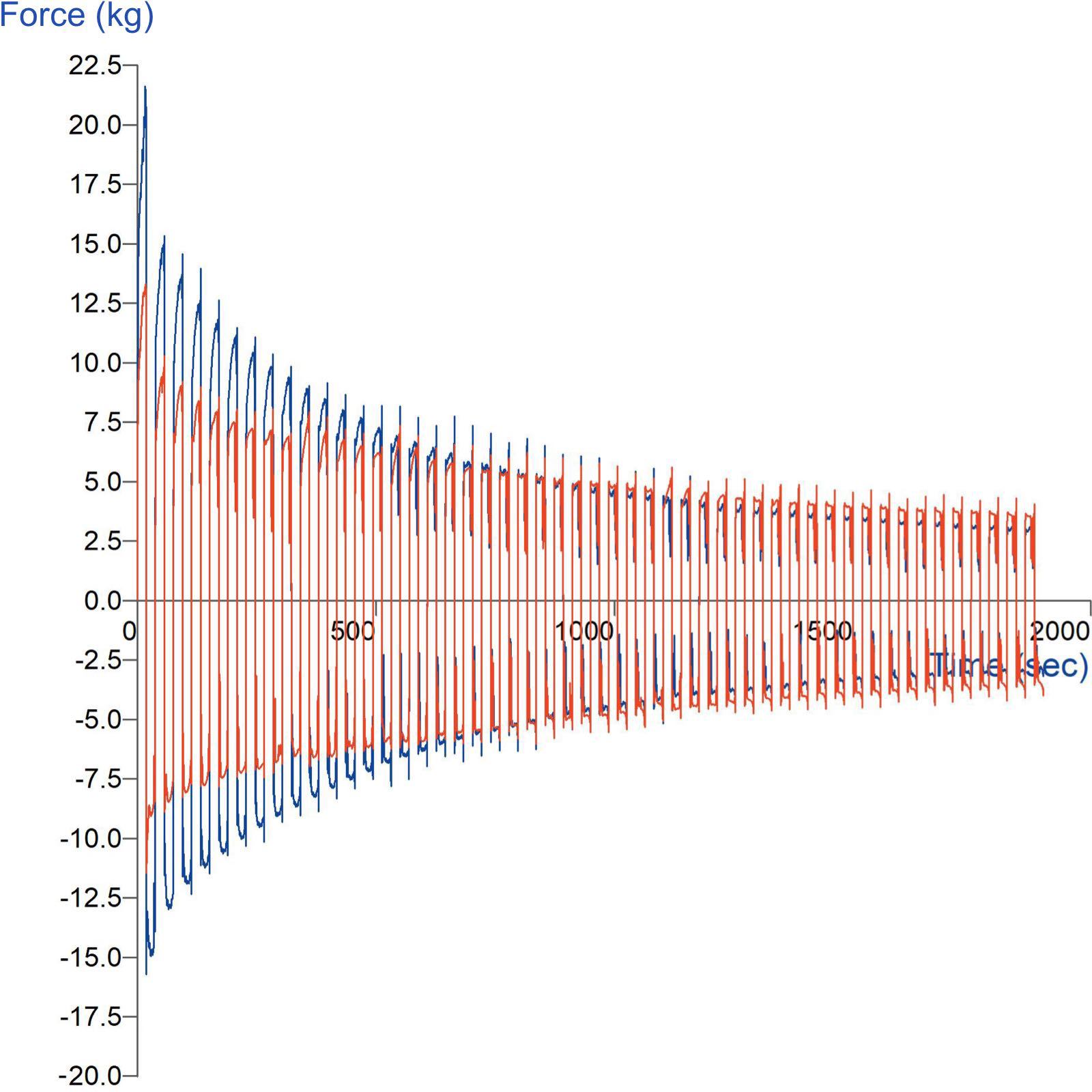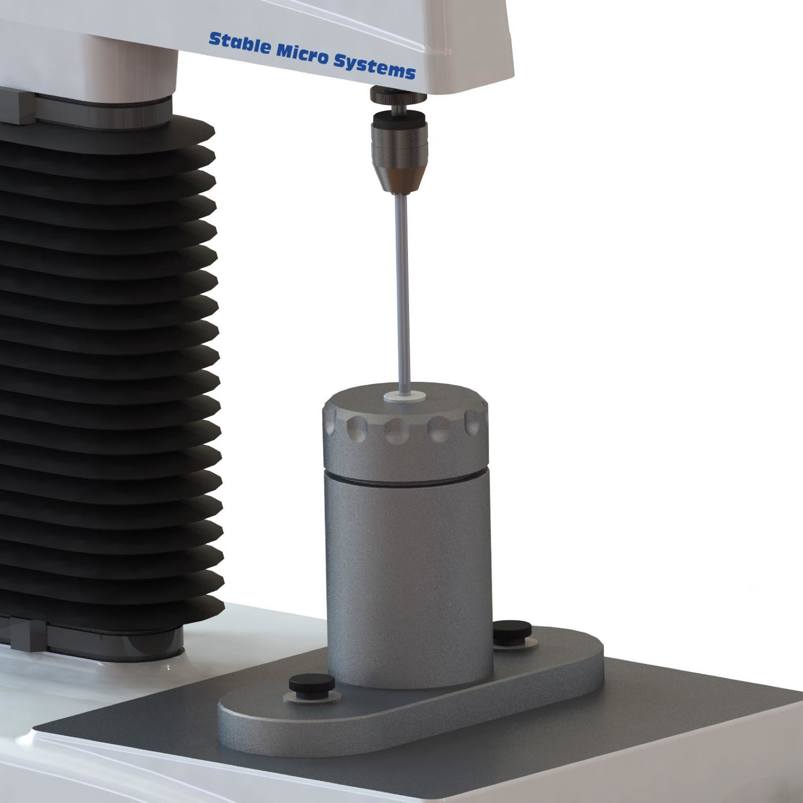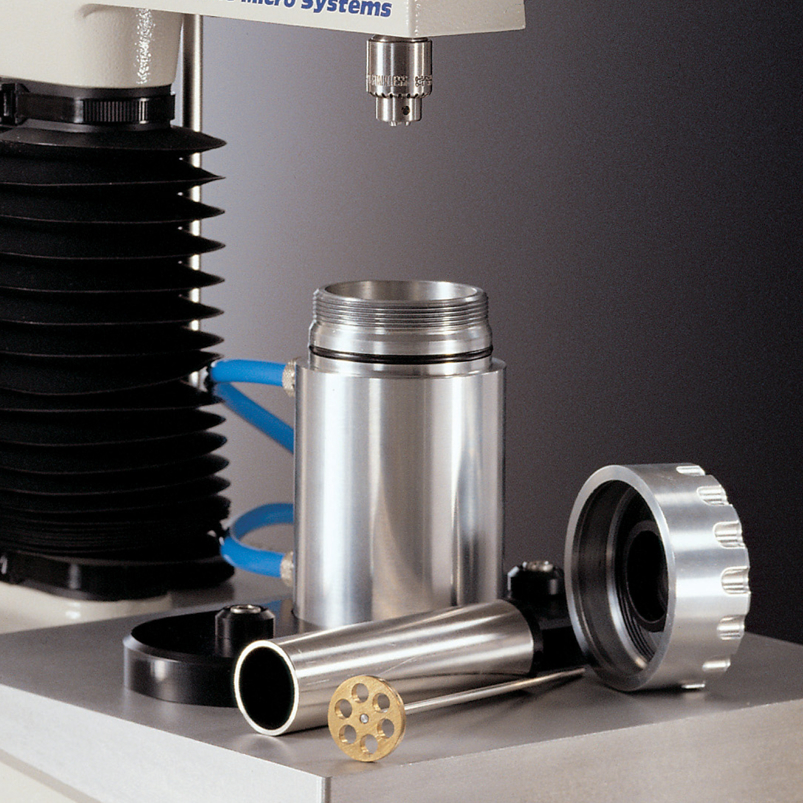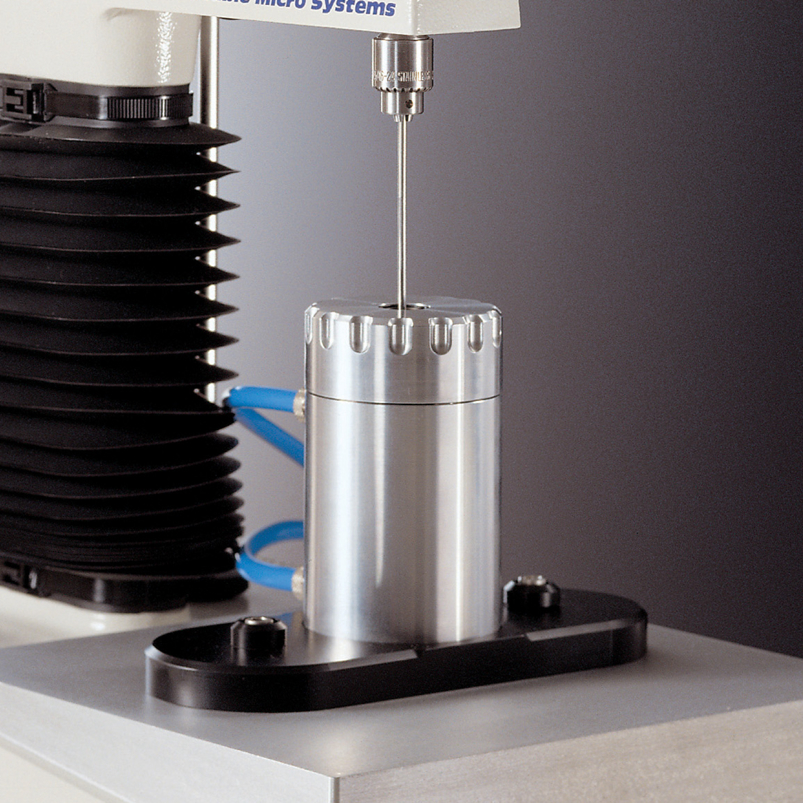Product overview
The Multiple Extrusion cell was originally developed by the Food Science & Technology Department at TNO Nutrition and Food Research Centre in The Netherlands. It was developed to look at the structural breakdown of semi-solids. Structural breakdown can be a result of mastication in the mouth or can occur during manufacturing of a product, e.g. during mixing and kneading. Work-softening of an ingredient, like e.g. a bakery fat during mixing of a dough, has implications for the final product quality.
Devices and methods exist for the measurement of the structure breakdown of products but these are either not continuous (as in for example the Kramer Shear Cell) or are subject to slip or stickiness during use (as in for example torque recording mixers/kneaders).
Note: A constant temperature water bath is required (this is not supplied).
Typical graph

Technical information
Further technical information
The internal surface of the water jacket is made with a deep groove spiral to ensure that the water is circulated evenly over the inner vessel wall.
The inner vessel is a neat fit into this water jacket so that it is held perpendicular by design rather than alignment and to ensure close contact with the circulating water. It is held in place with a screw cap fitted with 'O' rings that seal against the water jacket to prevent water loss. This cap also prevents the inner vessel from moving up or down due to the action of the piston during testing. The inner vessel is made of 1mm thick stainless steel which provides resistance to chemical reaction and also a good bearing surface to the piston.
Plugs are fitted to the ends of the sample tube to prevent the test product leaking out. The top plug has an 'o' ring seal against the tube and a PTFE seal against the rod.
The piston rod diameter is very small to ensure the least friction in the seal used without compromising on rod strength.
Ideal sample form
Sample that can be prepared using the vessel as the sample preparation method.
Benefits and limitations
- Continuous breakdown of the sample through repeated cycles
- Not all samples can be prepared
Installation
Full installation instructions are provided within the Education Zone of the latest Exponent/Connect software version and on the technical information sheet accompanying this product.
Chemical compatibility
Stable Micro Systems probes and attachments are commonly made from four materials: anodised aluminium (AA6082 T6), stainless steel (316 T), Delrin (acetyl copolymer) and Perspex (polycarbonate).
In general use, probes and attachments made from these materials will be suitable for testing food products and inert non-food materials.
The four materials listed above are not universally resistant to all types of chemicals and as such the compatibility of the probe/attachment material with the product (to be tested) must be established to prevent damage to the probes and attachments. If the compatibility of the product with the probe is unknown to the customer then the chemical information about the product (Material Safety Data Sheet or Product Data Sheet) should be submitted to Stable Micro Systems. Stable Micro Systems will then assess the suitability of the probe/attachment material for use with the product and advise accordingly. If this advice is not sought then Stable Micro Systems will not accept liability for probes/attachments damaged by chemical attack from the product being tested.
Cleaning and maintenance
All probes and attachments may be cleaned in warm (or hand hot) water using a mild detergent. A soft brush may be used but abrasive cleaning aids should be avoided. Stable Micro Systems products should not be microwaved or cleaned in a dishwasher.
Screw threads should be lightly lubricated after drying using a light lubricant, e.g. petroleum jelly, mineral oil. This will aid the fitting and unscrewing of the item. Each component of a probe or attachment should be wrapped separately when stored, to avoid scratching or chipping. This will safeguard against any unnecessary damage to the accessory.



